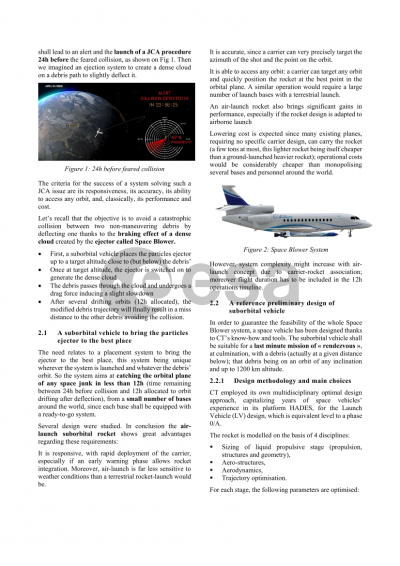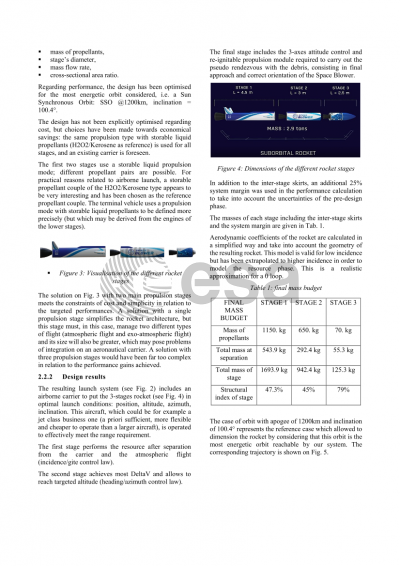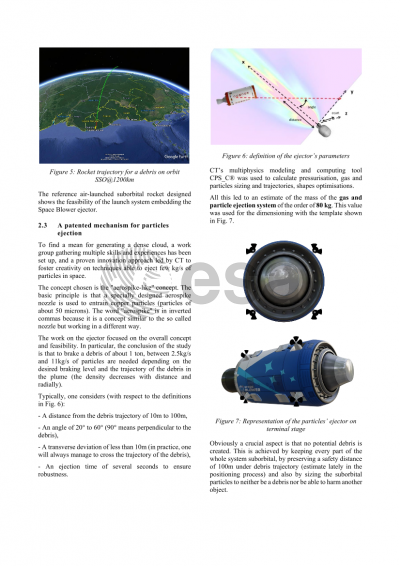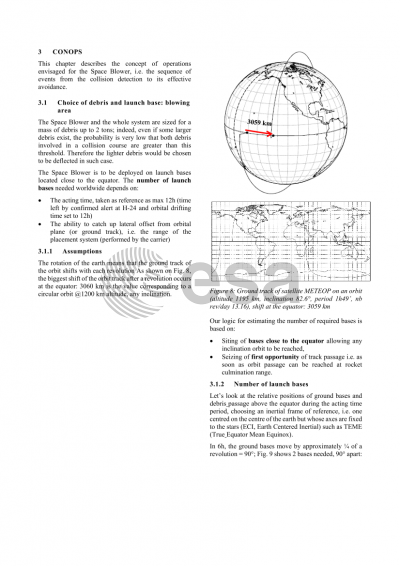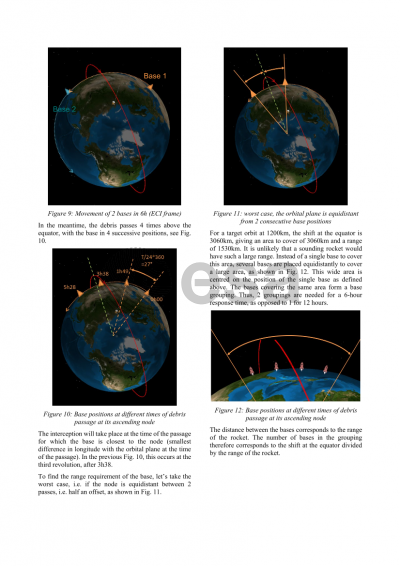Document details

Abstract
One of the main objectives of Space Traffic Management is the Just-in-Time Collision Avoidance (JCA) between space objects. Collision avoidance manoeuver is a common practice when at least one maneuvering satellite is involved. But unfortunately, among the 20,000 objects currently in the public catalog, only 1,500 are maneuverable, the others being incapable to perform a collision avoidance maneuver. When two non-maneuverable debris are in a collision course, even if detected, there are currently no operational means for avoiding the collision.
This is the reason why, in addition to long-term actions such as debris removal and debris mitigation, it is fundamental to prepare to avoid these detectable collisions between non-maneuverable objects. Several solutions are envisaged, among which the Space Blower is foreseen to act when both objects are large space debris, such as rocket bodies or defunct satellites. The Space Blower is a system composed of a sounding rocket (sub-orbital trajectory) launched from a jet plane and equipped with a device that injects a cloud of particles (also sub-orbital) in the trajectory of one of the objects. These particles are small enough so that, when passing through the cloud, the object is not damaged and no extra debris is created. On the other hand, this cloud will be dense enough so that the drag experienced induces a small delta-V (several cm/s). This slowdown modifies the trajectory of the object, which in turn, after several drifting orbital revolutions, avoids the other object.
The feasibility of the concept has been demonstrated by previous studies and this paper presents how it could be operated and implemented within the larger scope of Space Traffic Management, with respect to the current technical and organizational limitations.
Indeed, there are several limitations for implementing such JCA mission, the major one being the relatively low accuracy of the orbit characterization of space objects. Indeed, the accuracy of the current space tracking solutions prevents from deploying in-orbit JCA missions due to the large uncertainty of the orbital prediction and therefore the high number of conjunction alerts among which most of them are false alerts. As the JCA mission needs to be deployed 24 hours before the collision date, the predictions for 24 hours need to be robust enough to avoid the deployment of unnecessary JCA missions.
The paper presents the sequence of events from collision risk detection to debris trajectory modification by the system and its effect on the collision risk. This description includes the sizing of the Space Blower system, including the required number of ground bases, the range of the airlaunch, the rocket design, the concept of the ejector system and the mass and size of particles ejected. This sizing reflects on the observation accuracy limitations. A system approach has been used to define the observation accuracy requirements for such a concept and is presented in this paper.
This paper also elaborates on the need for an international organization responsible for space traffic management, including debris trajectory characterization, collision risk assessment and operational risk reduction using different solutions including the Space Blower. More specifically the operational use of the Space Blower within this organization is described. Eventually, a roadmap is given for the development of this Just-in-time Collision Avoidance service.
Preview

